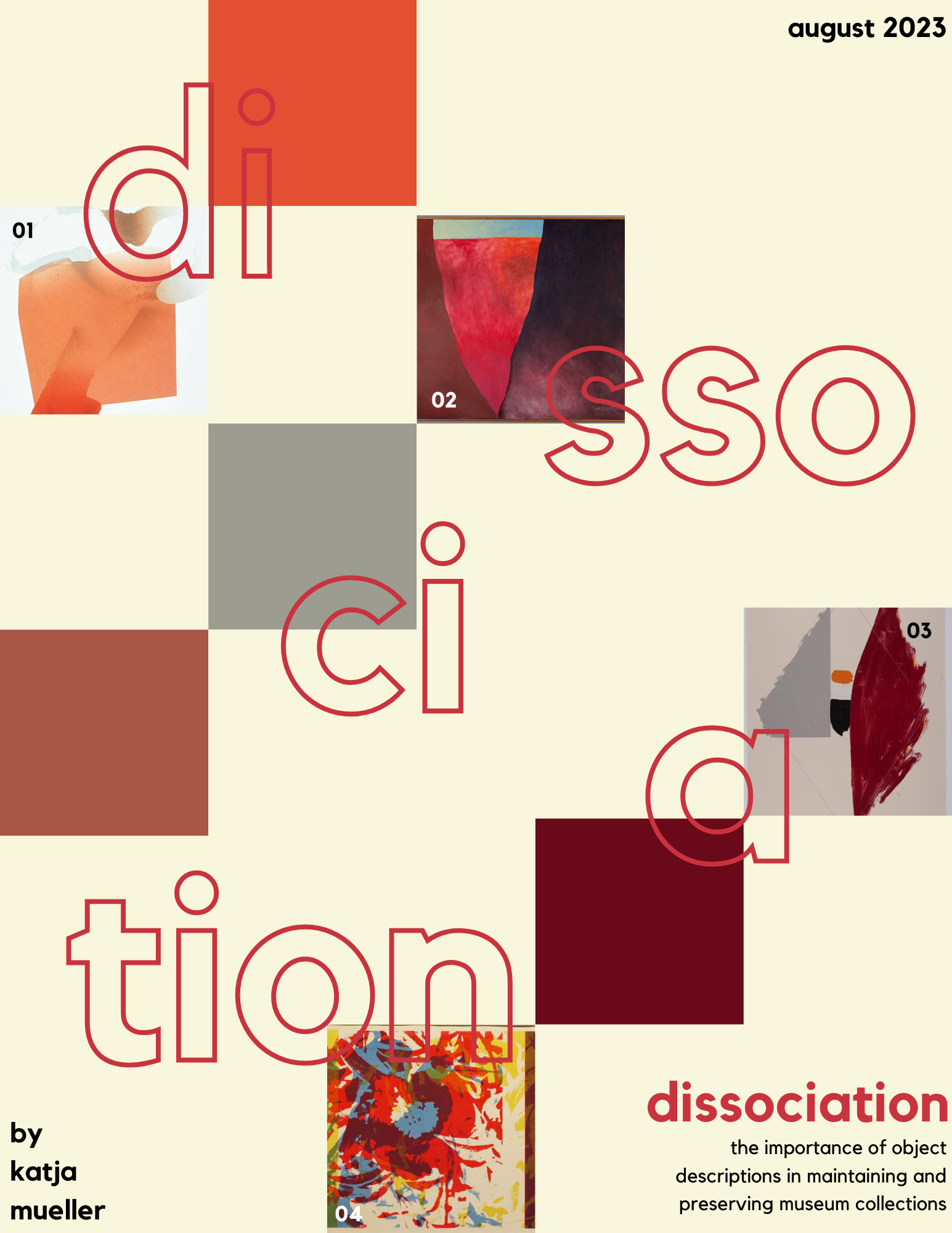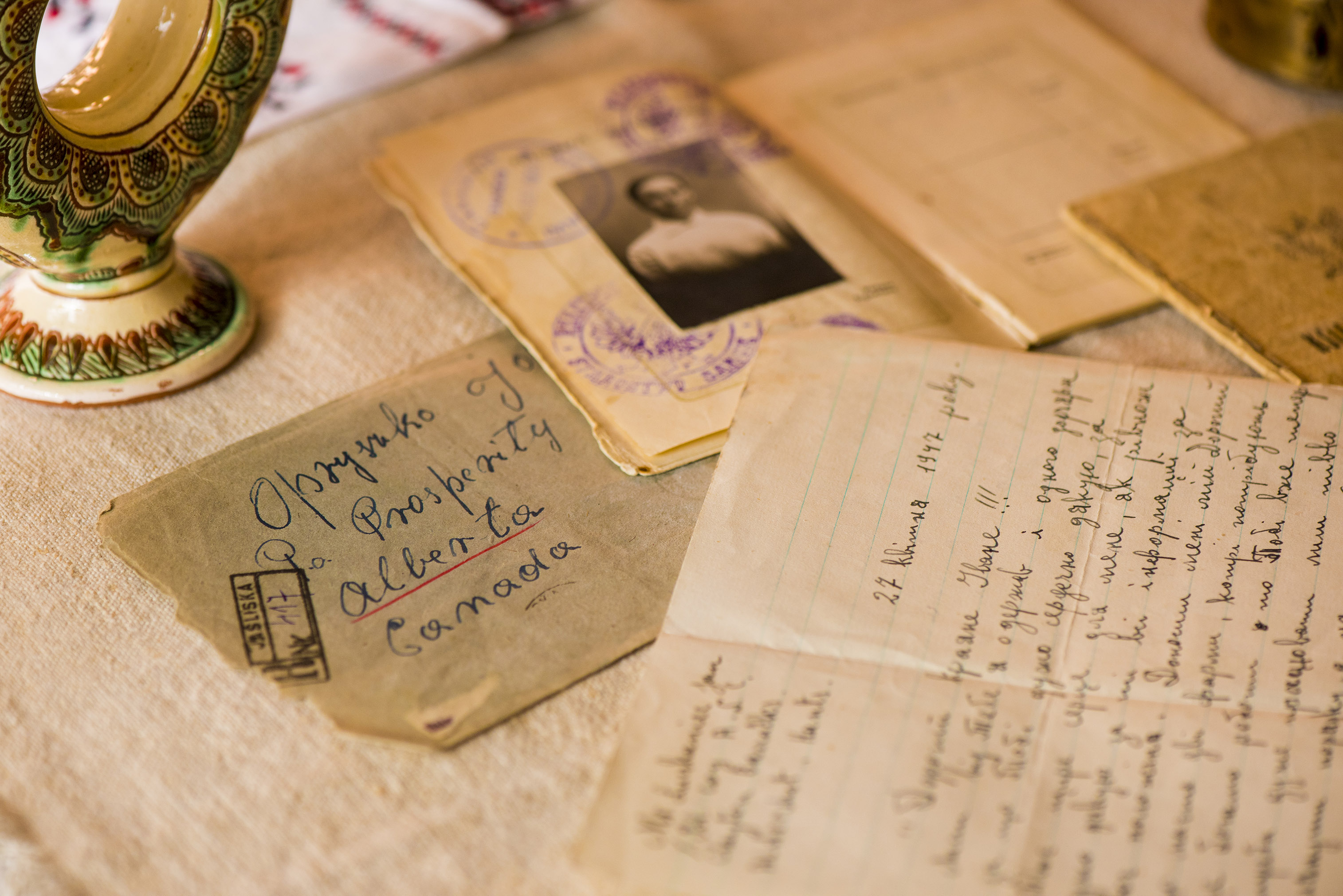Dissociation

Following my time in the Freshwater Invertebrates Collection, I have been primarily focusing on writing object descriptions for the University of Alberta Museums Art Collection. This task consists of writing physical descriptions of objects as well as additional research into the objects and artists for works of art that are Certified Canadian Cultural Property. One of the main purposes of this task is to reduce risk of dissociation, one of the ten agents of deterioration.
The ten agents of deterioration refers to the primary hazards that pose a threat to museum collections.1
Dissociation is the loss of objects, object-related data, or the ability to associate objects with data.2 This agent differs from the other nine (9) in that it affects the legal, intellectual, and/or cultural aspects of an object, in addition to its physical state. In many cases, dissociation is the direct result of one of the other agents of deterioration (such as a flood causing labels to fall off their objects). Dissociation-related risks can result from both action and inaction, such as misplacing items, removing identifying labels, or inadequately identifying objects in collections before disposal. The effect of dissociation is the “loss of objects, collections, and the data that give them value through context and meaning”. 3
To mitigate the risk of dissociation, objects should be securely linked to their access information, other parts, and subcollections. This is usually done by assigning a unique identification number (such as an accession number) and registering that number with the identification data in a permanent ledger (such as Mimsy XG). Another way to reduce risk is to have a recovery plan in case a dissociation occurs.
This is where object descriptions come into play. The item's physical description associated with the accession number can be used to identify the item if the label is removed, damaged, or lost. Without key details such as provenance and artist, an object loses its meaning, and our understanding of it can be lost forever. This task is therefore incredibly important in the maintenance and preservation of museum collections.
One of my favourite parts of writing object descriptions is the research portion. I have been able to delve into the works and lives of prominent Canadian artists, such as A.Y. Jackson of the Group of Seven, as well as international artists. I greatly enjoyed exploring German expressionism of the early 20th century through the works of Otto Mueller, Max Pechstein, Max Beckmann, and Rudolf Grossman. Through object descriptions I have been able to investigate a wide range of artists, mediums, and art movements across history.
1 “Agents of Deterioration,” Government of Canada, accessed June 26, 2023, https://www.canada.ca/en/conservation-institute/services/agents-deterioration.html.
2 R. Robert Waller and Paisley S. Cato, “Agent of deterioration: dissociation,” Government of Canada, accessed June 26, 2023, https://www.canada.ca/en/conservation-institute/services/agents-deterioration/dissociation.html.
3 Ibid.
Image Caption
All images are from the University of Alberta Museums Art Collection.
01 Liz Ingram, Fitting Together, Pulling Apart, 1975, print, 1975.36.2
02 Robert Sinclair, Untitled, 1967, painting, 1982.18.1
03 Douglas Haynes, First Time, 1978, print, 1996.2.22
04 John Freeman, Flowers, 1972, print, 1972.10.2



